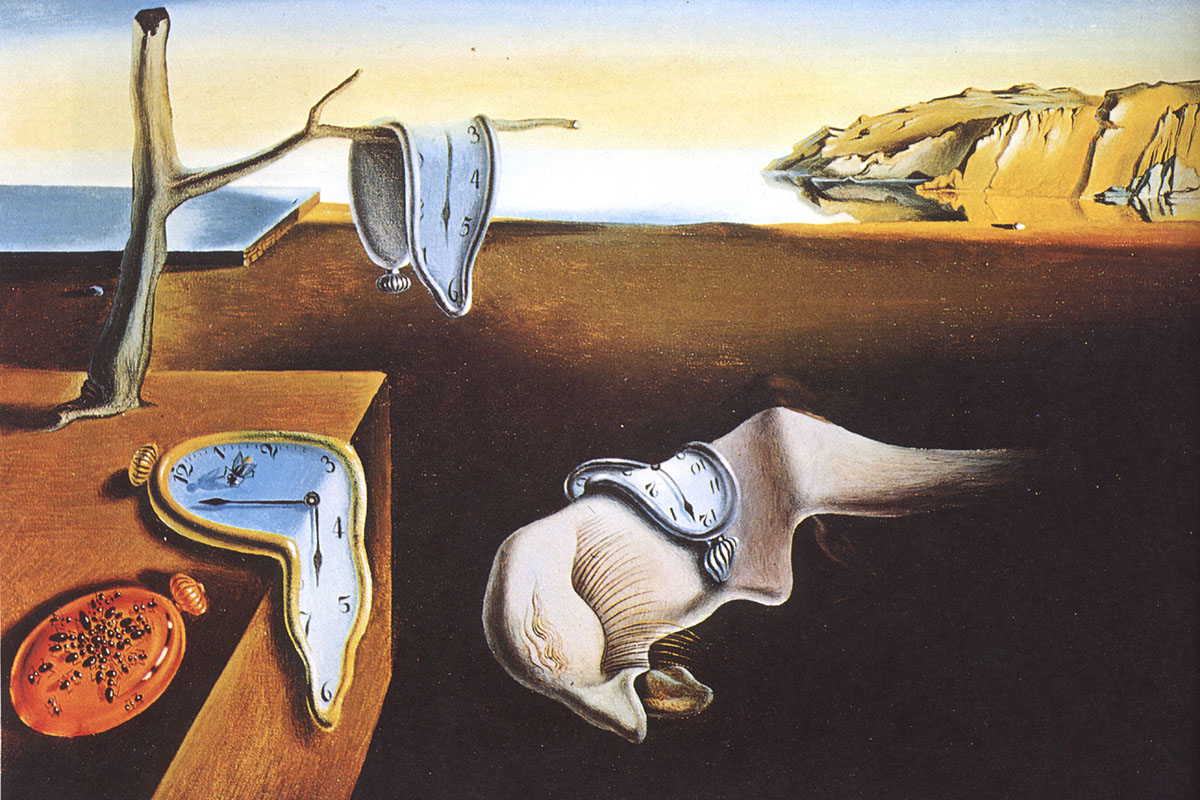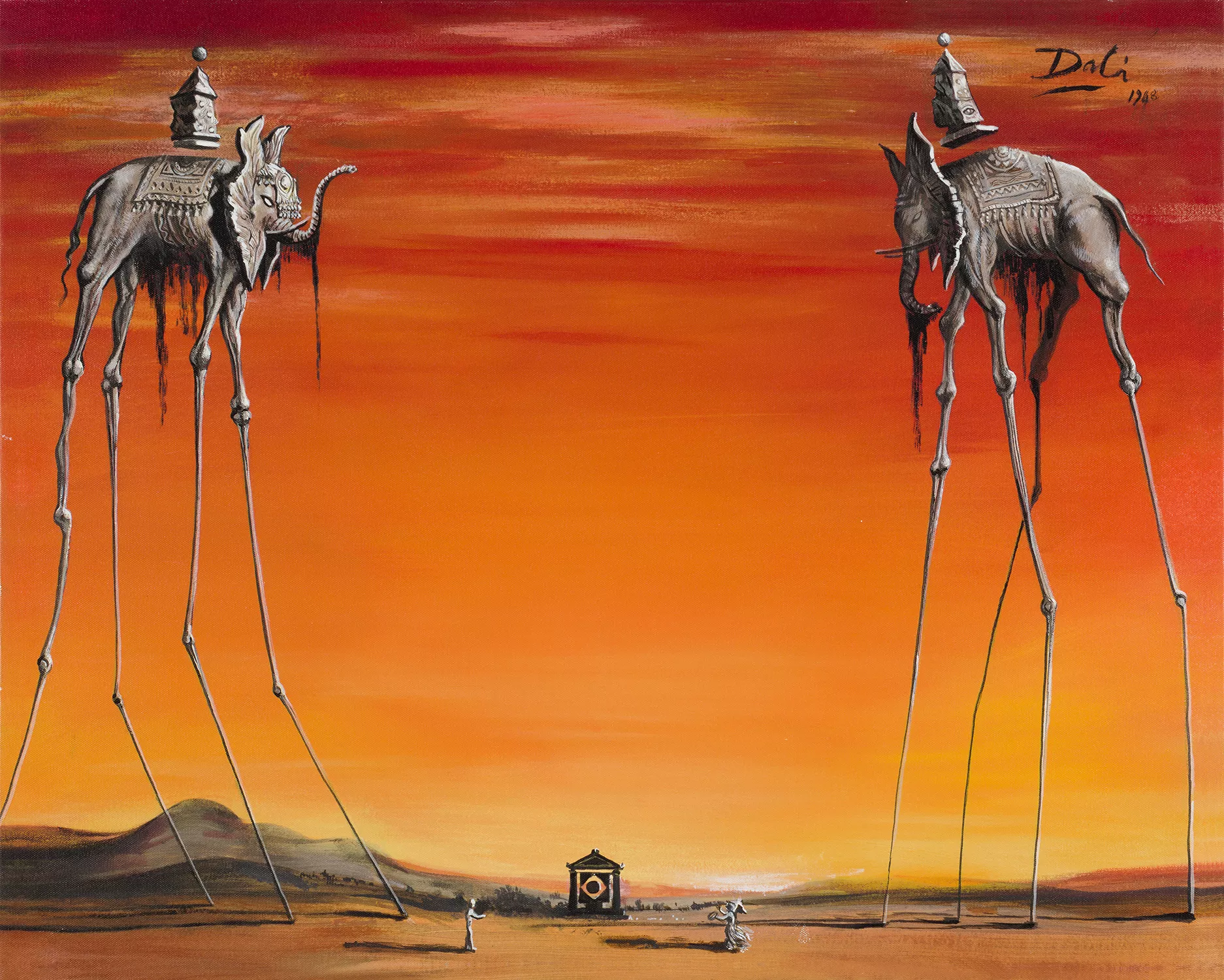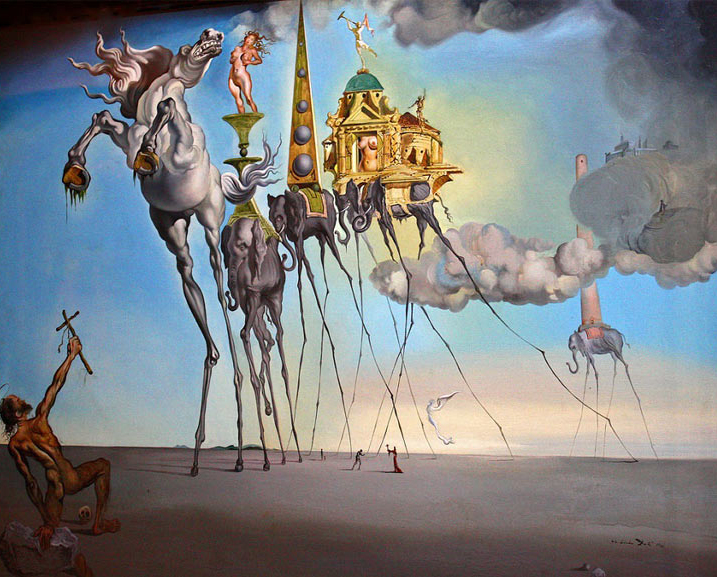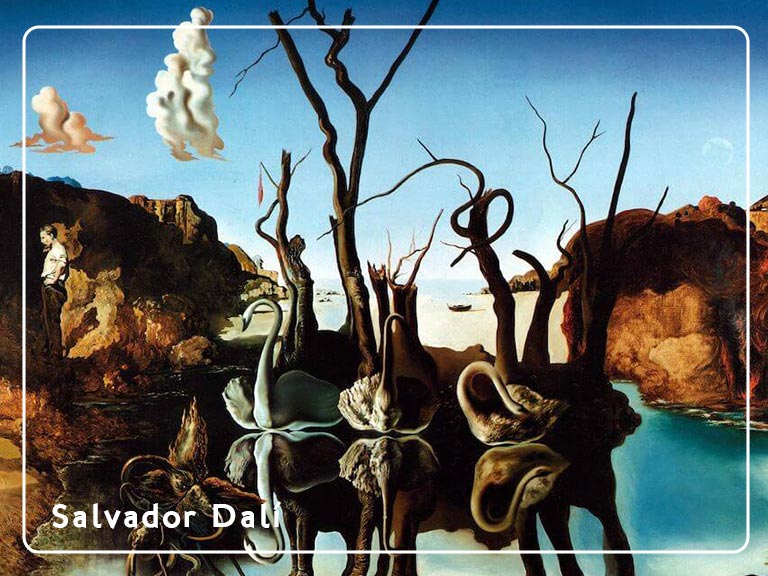Salvador Dalí was born on May 11, 1904, in Figueres, Catalonia, Spain. He displayed artistic talent from a young age and received formal art education at the Royal Academy of Fine Arts of San Fernando in Madrid. During his time in Madrid, Dalí became deeply influenced by various artistic movements, including Cubism and Futurism.
In the 1920s, Dalí moved to Paris, where he immersed himself in the Surrealist movement led by André Breton. Surrealism aimed to unlock the power of the unconscious mind and explore the irrational and dreamlike aspects of human experience. Dalí quickly became one of the movement’s leading figures, known for his unique style and eccentric personality.
Dalí’s art often featured meticulously rendered, realistic details combined with fantastical and symbolic elements. He employed a range of mediums, including painting, sculpture, photography, film, and even fashion and jewelry design. Dalí’s extraordinary technical skill and imaginative concepts established him as a master of surrealism.
Throughout his life, Dalí maintained a flamboyant and eccentric public persona, often dressing in extravagant outfits and adopting a distinctive mustache. He used his appearance and behavior as a means of self-promotion and as an extension of his artistic expression. Dalí’s eccentricities and theatricality added to his reputation as a larger-than-life figure in the art world.
Despite his success, Dalí faced personal and professional challenges. He experienced strained relationships with other Surrealists and was eventually expelled from the movement due to artistic and ideological differences. Additionally, he struggled with the loss of his beloved sister, Ana María, and the impact of political events such as the Spanish Civil War and World War II.
In 1940, Dalí moved to the United States, where he continued to explore new artistic avenues and collaborated with filmmakers, musicians, and designers. He also delved into commercial art, creating advertisements and even designing the logo for Chupa Chups, a popular Spanish lollipop brand.
Salvador Dalí passed away on January 23, 1989, in Figueres, his birthplace. Today, his legacy endures, with his artworks displayed in prominent museums and galleries around the world. The Dalí Theatre-Museum in Figueres, which he himself designed, stands as a testament to his creative genius and his ability to blur the boundaries between art and reality.
Dalí’s contributions to the art world extend beyond his captivating imagery. His daring exploration of the subconscious, his innovative techniques, and his ability to challenge conventional thinking have solidified his place as one of the most renowned and influential artists of the 20th century. Let’s explore four of Dalí’s most famous and influential pieces that continue to leave an indelible mark on the art world.
“The Persistence of Memory” (1931):
“The Persistence of Memory” is undoubtedly one of Dalí’s most recognised works. This iconic painting features melting clocks draped over various objects, including a distorted face. The dreamlike landscape and soft, eerie lighting evoke a sense of timelessness and the fluidity of memory. Housed in the Museum of Modern Art (MoMA) in New York City, this painting encapsulates Dalí’s exploration of the subconscious mind and the distortion of reality.

“The Elephants” (1948):
“The Elephants” showcases Dalí’s fascination with the grandeur of the animal kingdom and its symbolic significance. This surrealist piece portrays long-legged elephants with elongated, spindly limbs carrying obelisks on their backs. The juxtaposition of the massive animals with delicate, weightless objects challenges our perceptions of scale and gravity. The painting, held at the Salvador Dalí Museum in St. Petersburg, Florida, invites viewers to question the limits of possibility and the illusions of the mind.

“The Temptation of St. Anthony” (1946):
In “The Temptation of St. Anthony,” Dalí depicts the spiritual struggle faced by the eponymous saint. This work captures a surreal procession of grotesque figures, including distorted animals and humanoid creatures, surrounding St. Anthony. The painting’s frenetic energy and hallucinatory imagery reflect Dalí’s exploration of the inner psyche and the clash between temptation and faith. This masterpiece can be admired at the Royal Museums of Fine Arts of Belgium in Brussels.

“Swans Reflecting Elephants” (1937):
“Swans Reflecting Elephants” is a remarkable example of Dalí’s exceptional talent for transforming ordinary objects into surreal and imaginative forms. In this painting, the graceful swans on a lake’s surface perfectly mirror the shapes of elephants, blurring the boundaries between reality and fantasy. The delicate reflections, coupled with the meticulous rendering of each element, create a harmonious and mesmerising composition. This artwork is part of the Dalí Theatre-Museum in Figueres, Spain, where visitors can immerse themselves in the artist’s world.

Salvador Dalí’s artistic legacy is characterised by his ability to merge reality and the imagination, unveiling the hidden corners of the subconscious mind. Through works such as “The Persistence of Memory,” “The Elephants,” “The Temptation of St. Anthony,” and “Swans Reflecting Elephants,” Dalí invites us into a realm where rationality gives way to surrealism and symbolism. His profound impact on the art world continues to inspire and challenge artists and audiences alike, reminding us of the infinite possibilities that lie within the depths of our own creativity.
If you would like to receive a roundup of all of our blog posts once a week to keep you inspired in your inbox, why not sign up to our newsletter. You can access our sign up at the top of our page. If you are a London Art College student and you would like your artwork featured here, drop us a line at any time.

